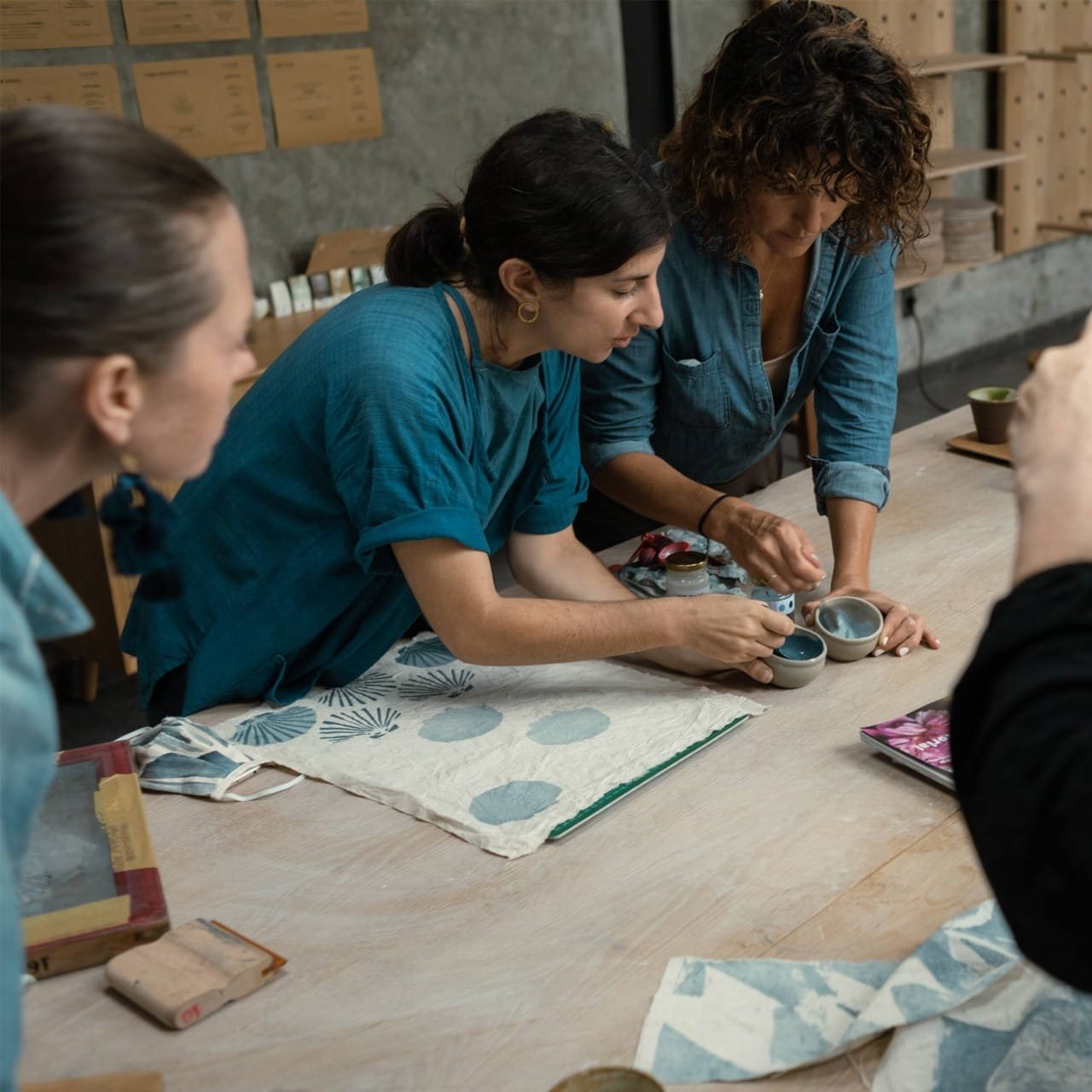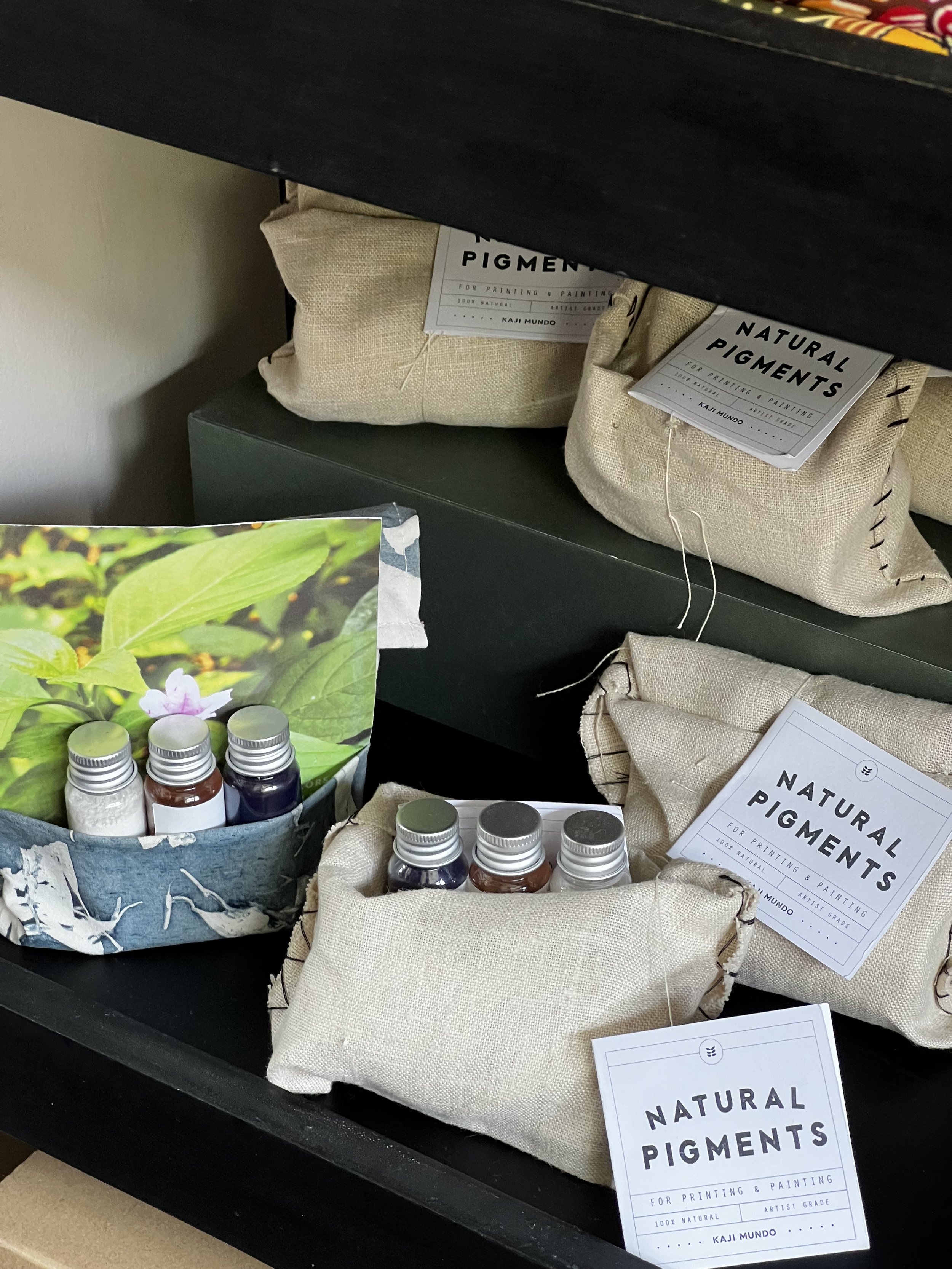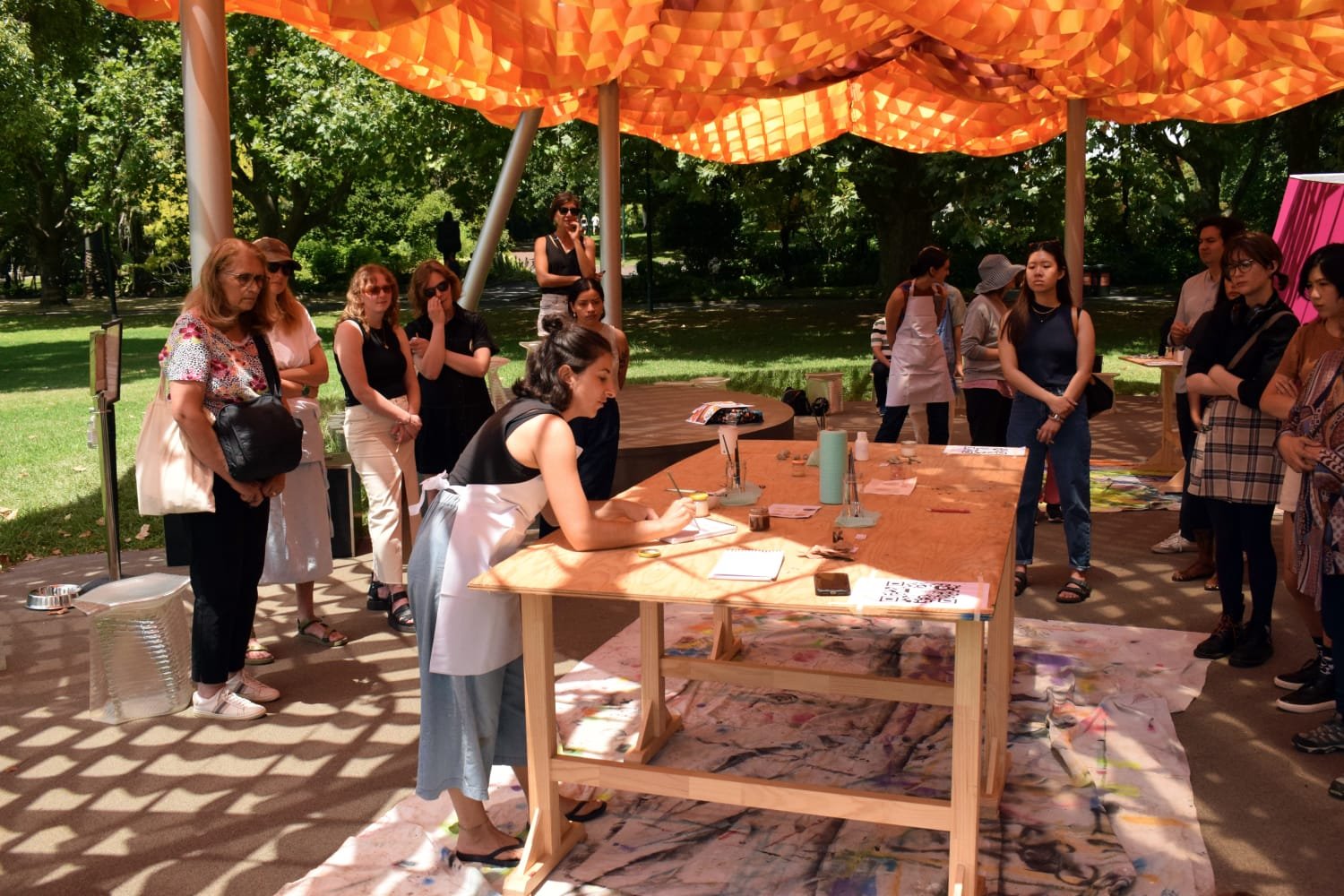Get to Know: Fiona Caripis of Kajimundo
/A convo with founder of Kajimundo, natural color and pigment explorer, and a bridge between the worlds of natural pigments and fine art.
Tell us a little bit about yourself and background
I'm from Melbourne, but have moved around since graduating from Tafe- I studied fashion design and patternmaking. I went to intern with a sustainable womenswear brand in London. That was probably the beginning of my looonnng journey learning about 'sustainability', and to figure out what I wanted to do. The fashion industry didn't really align with my values, which sucked because I thought that was the field I wanted to work in. After working a few different jobs in fashion, theatre, and galleries in UK and Australia, I ended up on Google looking up "fair trade jobs" (or something like that). I didn't find a job but did find (Nia and Ismoyo's) natural dye batik course at Threads of Life, Bali. That's how I ended up in Bali.
Have always wanted to ask: what’s behind the name?
The short story.... Kaji means knowledge in (old school I'm told) Bahasa Indonesia and Mundo means world. The name is about learning from the world and across cultures.
The long story...... John [Kajimundo co-founder] and I needed to pick a name, we already had the Kaji part, we were Kaji x (for collaboration at first). At the time, we were also really fresh, and still working out what the project would be, so wanted something that could be fun, catchy and work for potentially a range of projects we may be doing around sustainability and knowledge sharing. We were stuck at Cafe Vespa one day due to a massive rainy season downpour, and by the time we left we had Kaji Mundo. John spent a lot of time in his other life living in South America and is fluent in Spanish so that's how we ended up with the Mundo part.
What was your first experience with natural pigment?
I don't know how old I was but I recall sitting in the backyard at home digging at the dirt until I reached an orange clay, I'd scrape some out and smoosh it in my hand. I clearly remember sitting on the grass, and the feeling of digging my finger into the layers of soil and clay, dirt getting stuck under my nails.
What do artists think or tell you when they first hear about Kajimundo?
Artists specifically, I'm not sure. Leaning into the art world is quite a new direction for Kajimundo, but maybe they still think 'indigo paint' and that's a key association. I was so fixed on Kajimundo being textile/fashion focused for a really long time.
What’s your favorite pigment and why? (yes, you have to choose one)
Mean! I have to write two here, because indigo is too obvious. But indigo definitely still has my curiosity, just because it has such an incredible global history across traditional communities, and its unique molecular properties. Indigo is a colour that comes 'alive' in partnership with other matter, and I find that super interesting. I also love painting with extract from eucalyptus, it smells like home and connects me there.
What do you wish people knew about natural colors?
That they are special and carry stories, and exist in your garden and on the street, but they are not a resource for infinite extraction and industry scaling. (an opinion not fact).
The most FAQ about your work or practices?
‘Can I do a dye workshop with you?’ and ‘Can I wash your ink if I paint on fabric?’
Who are your natural pigment heroes?
Can I expand this to natural color heroes? Because I have to put Novi on here! [Dear reader, we have done a great interview with Novi of Cinta Bumi Artisans that also lives on our blog! Lucky you!]
As for other heroes, I came into exploring pigments in a pretty insular way, and have only really started to explore pigments in the last two years. Before that it was all about developing the textile binder and figuring out what to do with Kajimundo. However, some faves: @ines.katamso (I met her when I first started Kajimundo and it's so interesting to see her journey go from an interest into fully embodying pigments into her practice), @Ochre.Earth (Melissa Ladkin), Herman De Vreis (his earth rubbings and 2015 Biennale works have been an ongoing influence for me. I discovered his book "To Be Always" when I worked at the bookshop at National Gallery of Victoria)
Also, this is going to sound corny, but the ancestors I guess are the ultimate heroes, who explored and created, allowed for that knowledge to be passed down, and I guess the land itself. I learn from random articles about Aztec blue, history books, other artists, science papers (whatever is free online), YouTube, old textile books, and field trips to craftspeople around Bali. Oh, and people that have bought my ink/colours and write to me! I am always amazed to see how people use the colours, it's almost always so different, keeps me curious to explore more, and I am so happy when they share that the pigments have sparked some happiness and curiosity for them too.





























